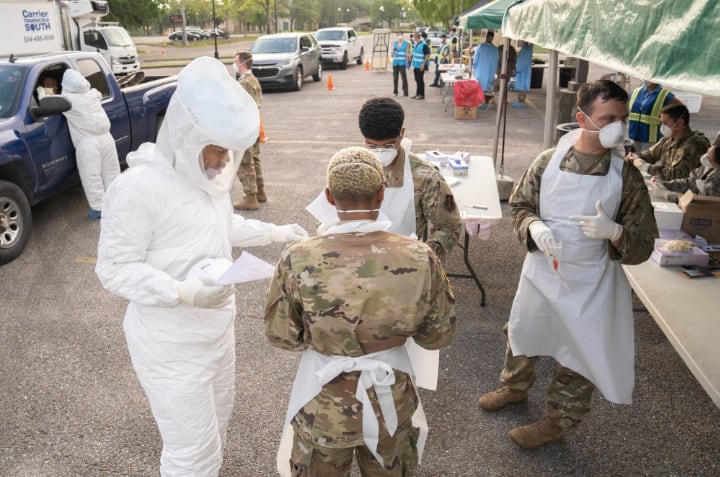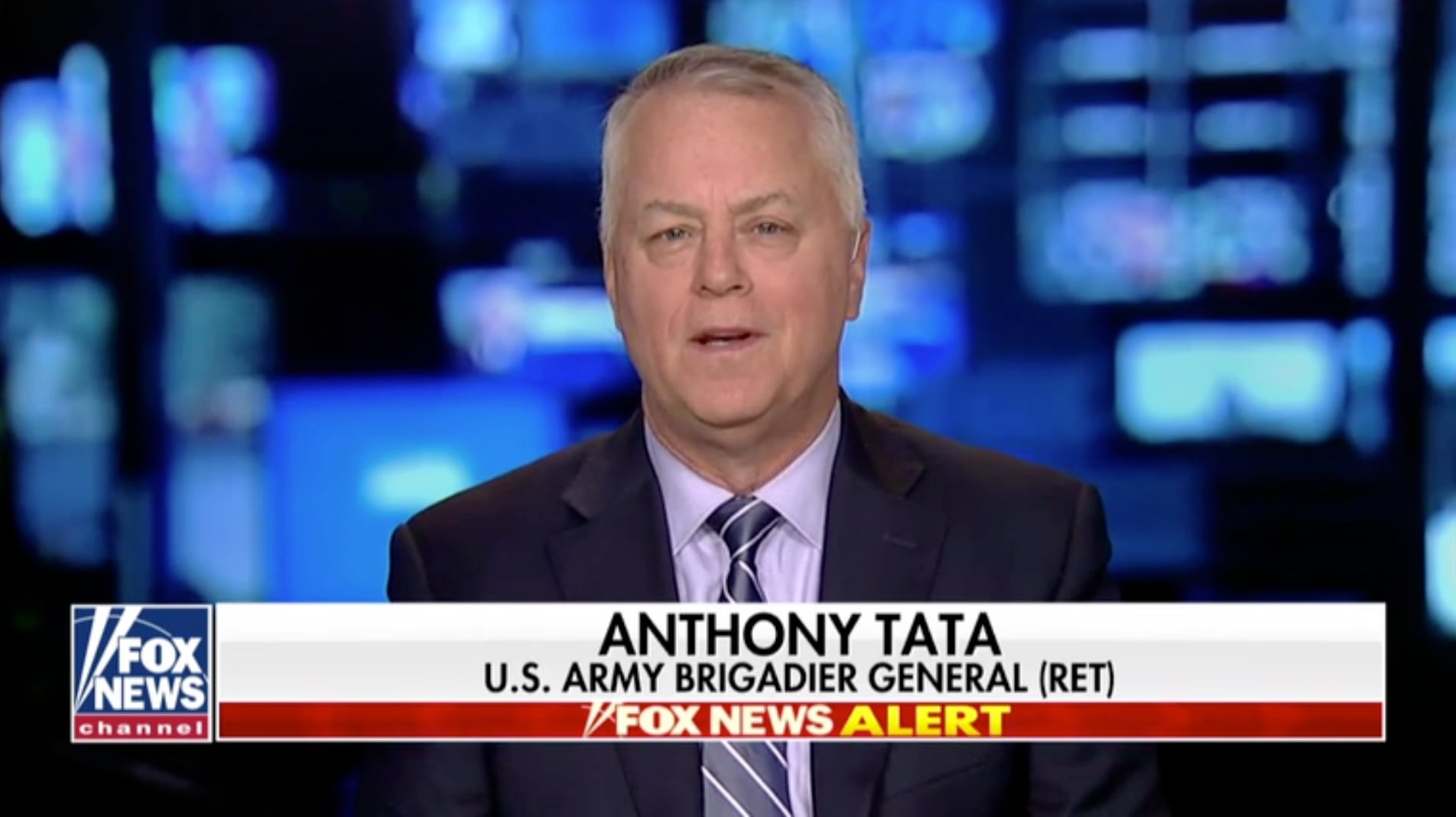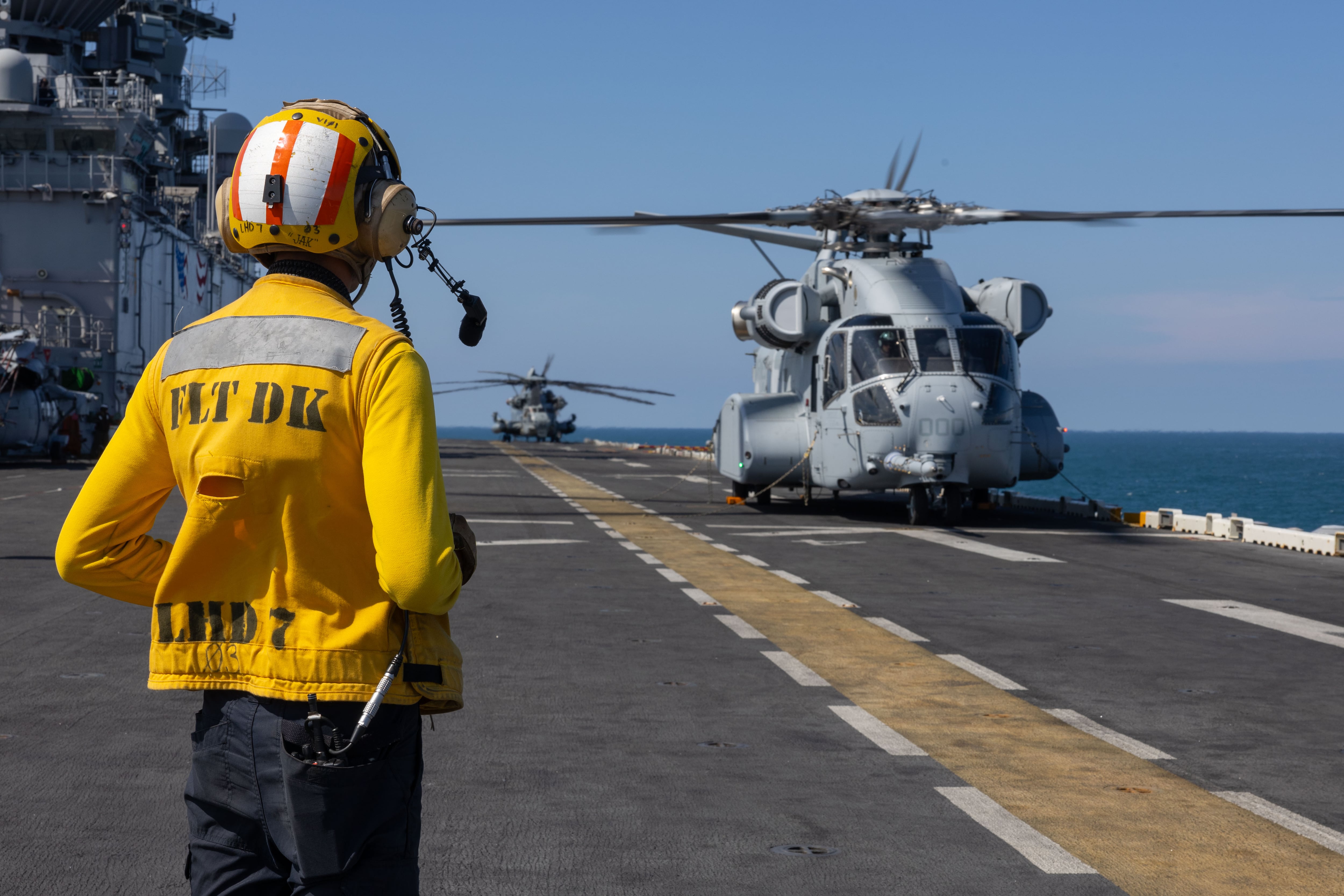The Defense Department has set a goal to be analyzing 60,000 coronavirus tests a day in June, senior leaders announced this week, in an effort to get a better grip on how many troops have been infected and to make informed decisions about bringing back travel, training and other key operations that have been throttled during the pandemic.
After weeks of sticking to testing only symptomatic service members, DoD is working toward a more thorough, but targeted, approach, Air Force Gen. John Hyten, vice chairman of the Joint Chiefs of Staff, told reporters Friday.
“From a military perspective, we have to figure out how to use testing in ways to validate the readiness of our force to deploy, the readiness of a ship to go out, and so testing is going to become a critical part of that,” he said, as the department reevaluates its March travel ban and considers, alongside state and local governments, rolling back any shelter-in-place policies.
As of Friday, nearly 3,000 service members have contracted coronavirus, as well as about 2,000 more dependents, civilians and contractors.
The question of widespread testing has come from multiple sources.
Last week, during a virtual meeting of the House Armed Services Committee, the issue of coronavirus testing around the world came up.
“The question I’ve been asking is, really, the prioritization of the deployment of testing as it comes online,” Rep. Michael Waltz, R-Florida, a National Guard officer, told Military Times on Monday. "Are they focused on the parts of the force that are most critical? For example, our nuclear forces and our top-tier special operations task forces? Are they focused on people downrange, deployed, that may be interacting with native populaces? Or are obviously in a combat zone, and we can’t have that sidelined?”
Among the witnesses were Kenneth Rapuano, assistant defense secretary for homeland defense and global security, and Air Force Brig. Gen. Paul Friedrichs, the Joint Staff surgeon, Waltz said.
“They did not come to us in that hearing in response to that question and say, we have the capacity to test entire ship crews, and we have the capacity to test entire ballistic missile squadrons," he added.
As President Trump has touted that “anyone that wants a test can get a test,” and DoD has built up to 16 labs open for analysis with the capacity to run 9,000 samples a day, the military has limited its testing to symptomatic service members ― with one notable exception.
A March outbreak on the aircraft carrier Theodore Roosevelt ― the handling of which ended in the firing of its commanding officer and the resignation of the then-acting Navy secretary ― has become a bellwether for the rest of the military’s response to COVID-19 among its forces.
Because of the close quarters aboard a carrier, each of TR’s sailors will be tested for coronavirus. As of Friday, about 4,500 of 4,800 sailors have been tested, 660 of whom came back positive ― with more than half of those asymptomatic.
With such a stark warning that thousands of troops could be spreading the virus but showing no symptoms, the calculus changed.
“We recognize despite, really, our best efforts, we’re going to have to learn how to learn how to operate with the virus,” Rear Adm. Bruce Gillingham, the Navy’s surgeon general told reporters April 11.
‘We’re not there yet’
At the time, however, senior leadership was not ready to start ramping up testing.
“The constraint of the current testing technology is, you may test negative, but the testing is not so accurate to say that you know that person is negative,” Thomas McCaffery, assistant defense secretary for health affairs, told Military Times April 11. “In that environment we want to make sure we devote those finite resources to the highest priority," meaning those with symptoms.
But by Tuesday, a plan had started to come together.
“Our desire, our aspiration, is to expand testing, especially for groups that are probably going to be in tighter quarters,” Army Gen. Mark Milley, chairman of the Joint Chiefs of Staff, told Military Times, including submariners, bomber aircrews and new recruits heading to training.
Some of the information coming out of the TR has been fluid, Hyten said Friday, as asymptomatic positive tests came back, and sailors who originally tested negative later developed symptoms and tested positive.
“Again, it’s only 5,000 people, but it is 5,000 people of a certain demographic, and that’s a very important data point to understand, because that is our data point as a military,” he said.
The nation’s top infectious disease expert has also admitted the shortcomings of testing, notably this week, in response to calls from some states to lift shelter-in-place orders.
"We have to have something in place that is efficient and that we can rely on, and we’re not there yet,” Dr. Anthony Fauci, the director of the National Institute of Allergy and Infectious Diseases, told the Associated Press.
Still, DoD has decided that more awareness is better than perfect awareness. Right now, Hyten said, the aircraft carrier Nimitz and an unnamed nuclear unit are getting a batch of test kits.
A Nimitz sailor tested positive for COVID-19 on April 8, Navy officials confirmed, as the Naval Base Kitsap, Washington-based carrier prepares to deploy, making it a high priority population.
The nuclear unit is also high-priority, as submarines and bombers are part of the U.S.'s most critical weapons capabilities. High-end counter-terror units in the special operations community are also on that list, Milley said.
And then there are the services’ newest troops, coming in from a civilian lifestyle and population.
RELATED
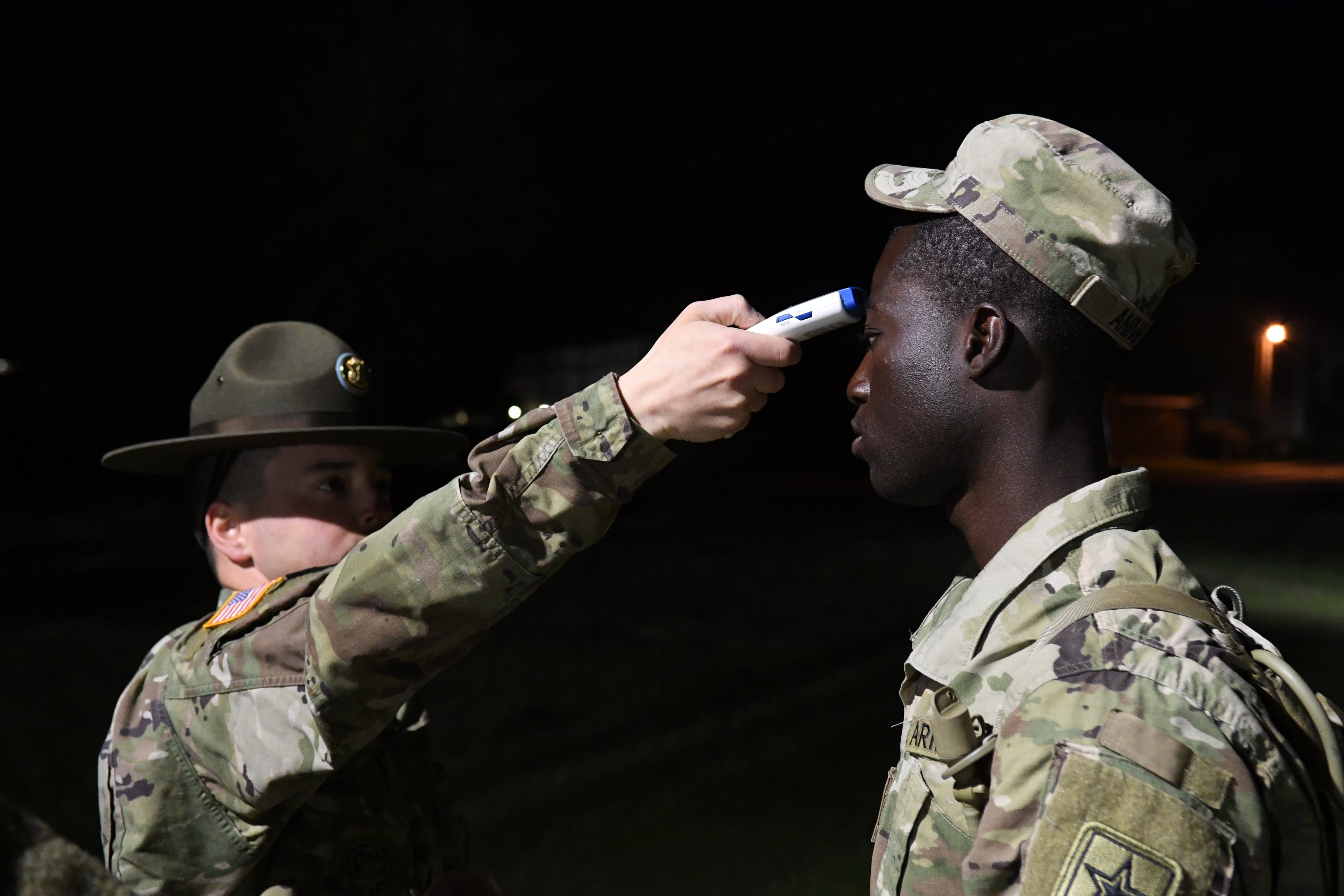
“For me, basic trainees coming into the system into the pipeline, the ability to test them is important for future readiness,” Defense Secretary Mark Esper said Tuesday, in the interest of avoiding hollowed-out junior ranks as the pandemic continues.
The next six weeks
As those testing supplies roll out, the military has other moving parts to consider.
Esper told reporters Tuesday that a decision on how long to extend the department-wide stop-movement order was imminent, as a month into the 60-day policy, it’s become clear that it won’t be safe to travel either domestically or internationally by mid-May.
“The important thing is as this virus unfolds and as our mitigation measures take place and as testing happens, etc., this is something that I committed … we will be reviewing this,” Esper said, every two weeks.
RELATED
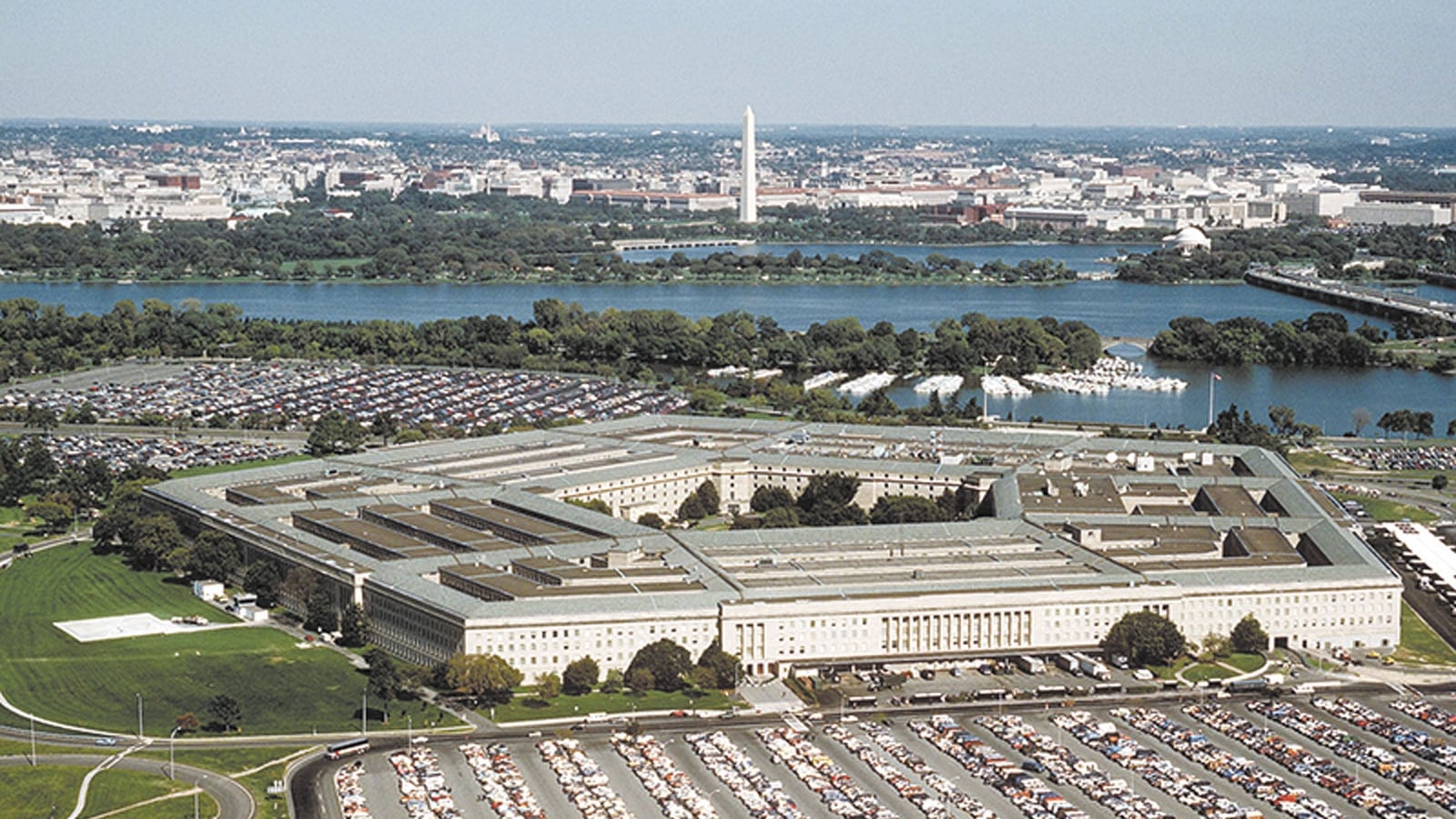
Troops should expect to see more isolation periods before and after deployments, Hyten said, as well as thorough screenings for fevers, symptoms and contact with others who are confirmed or suspected COVID-19 positive.
“When you look at our numbers, it’s almost 60, 70-percent asymptomatic,” among the largely young and healthy force, he said, making it more crucial to carefully prevent spread. “Is ours higher than most of the population because of our demographics?”
Meanwhile, many military installations are situated in states that are looking at “re-opening” their economies, including Alabama, Alaska, Florida and Texas.
But installation commanders will have their own authorities over the troops and civilians who live and work on them, and Hyten said they will have the “ability to flex” their policies for service member quarantine, or allowing employees through the gates after they’ve been more freely moving around nearby towns and cities.
“As the states are moving independently, it’s important for us to maintain discipline in the force,” he said.
Meghann Myers is the Pentagon bureau chief at Military Times. She covers operations, policy, personnel, leadership and other issues affecting service members.
